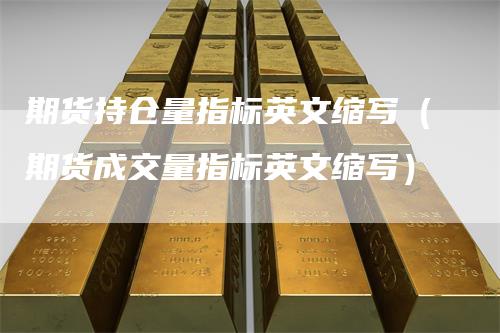
What is the abbreviation for Futures Open Interest?
The abbreviation for Futures Open Interest is OI. It refers to the total number of outstanding futures contracts that have not been closed, exercised, or expired on any given day. OI is an important indicator used by traders and analysts to gauge the market sentiment and potential price movements in the futures market.
How is Futures Open Interest calculated?
Futures Open Interest is calculated by summing up the number of long positions (buyers) and short positions (sellers) in the futures market. Each open contract has both a buyer and a seller, resulting in one contract being counted as one unit of Open Interest. As trades occur and positions are closed, the Open Interest will either increase or decrease accordingly.
What does Futures Open Interest tell us?
Futures Open Interest provides valuable insights into market participation and liquidity. Higher open interest suggests more active trading and a larger number of market participants, indicating a higher level of market interest and potential volatility. Conversely, lower open interest may indicate less trading activity and a lack of market interest.
How is Futures Open Interest used in analysis?
Futures Open Interest is often used in conjunction with price movements and trading volume to gain a comprehensive understanding of market trends. A significant increase or decrease in Open Interest can signal potential reversals or trend continuations. When Open Interest rises along with an increase in prices, it may indicate new money flowing into the market and a strengthening trend. Conversely, a rise in Open Interest with falling prices may suggest a market top or reversal.
What are the limitations of Futures Open Interest as an indicator?
While Futures Open Interest is a useful indicator, it should not be solely relied upon for trading decisions. It is important to consider other factors such as technical analysis, market news, and economic indicators to make well-informed trading choices. Additionally, Open Interest does not provide information about the direction of trades, i.e., whether they are bullish or bearish. Therefore, it is essential to use Open Interest in conjunction with other tools to form a comprehensive view of the market.
Conclusion
Overall, Futures Open Interest, abbreviated as OI, is a crucial indicator used in futures trading. It helps traders and analysts understand market sentiment, potential price movements, and market participation. By considering Open Interest alongside other indicators, traders can make more informed decisions and increase their chances of success in the futures market.